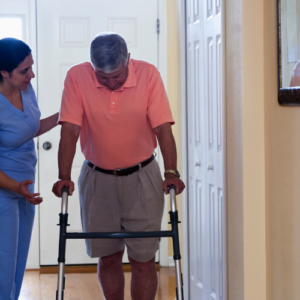Comprehensive Care at Home in 2025 and Beyond
Each year, we take some time to reflect on the ongoing growth of our models of care at home, and 2024 was no exception to…
The Five-Year Roadmap for Hospital at Home
Over the past few months, many conversations have taken place between stakeholders in the hospital-at-home industry and the federal government, all aimed at reaching a…
Why 2024 Will Be a Big Year for Care at Home
Healthcare is continuing to experience rapid shifts as we move into the new year, as several external factors have influenced care delivery. These include the…
Why 2023 Was a Milestone Year for Comprehensive Healthcare at Home
If 2023 taught us anything, it’s that the culture of healthcare is shifting — home. In the past twelve months, Contessa has witnessed this shift…
Why Telehealth is a Win for Providers
The rise of telehealth during the COVID-19 pandemic came out of absolute necessity, and with that rise came rapid advances in how, where, how often…
Remote Patient Monitoring: Vital Tools for Providers
It might seem difficult for clinicians to monitor patients 24/7 outside of a traditional clinical setting, but advancements in technology are enabling providers to be…
Lessons From a Joint Venture Approach to Care at Home
Care-at-home treatment models have taken root and rapidly expanded in scope in the past few years, accelerated by the effects of the COVID-19 pandemic. It…
Care at Home, Dementia, and Reducing the Risk of Deconditioning
Deconditioning, or a decline in physical fitness and wellness during a hospital stay, is challenging for anyone but especially difficult for people living with dementia….
What Medical Conditions Does Contessa Treat at Home?
Over the past few years, we’ve seen a rapid shift in the prioritization of medical care at home programs. Clearly, COVID-19 was a big driver…
The Growing Patient Preference for Care at Home
For those of us in good health, spending time at home is something we largely take for granted. It is the hub of our everyday…
Spanning the Continuum of Care at Home: A Look at the Progress of 2022
The past three years since the start of the COVID-19 pandemic have unmistakably been a period of rapid growth for healthcare services that focus on…
Understanding the Scope of Palliative Care
Palliative care is commonly approached by providers as a solution to initiate at or near the end of a patient’s life. Often, the focus of…
More From This Expert
Home Healthcare News: Inside the Future of Contessa Health and High-Acuity Care at Home
Home Healthcare News | January 2, 2025 As 2024 came to a close, Contessa’s Chief Medical Officer, Robert Moskowitz, MD, MBA, sat down with Home Healthcare News for an exclusive interview about the company’s standout performance as “One of the best examples of success when it comes to alternative care models within the home.” In…
HME Business: Despite Its Resounding Success Story, A Major Opportunity for HME Companies Is in Danger of Going Away
HME Business | October 22, 2024 The Centers for Medicare and Medicaid Services (CMS) Acute Hospital Care at Home waiver is set to expire at the end of December, and Contessa’s Chief Medical Officer, Robert Moskowitz, MD, MBA, joined the HME Business FUTURE conference in Nashville this August along with other hospital-at-home leaders to discuss…
Gist Healthcare: Continuing the Conversation: Contessa CMO Rob Moskowitz on the Future of Hospital-at-Home
Gist Healthcare | September 18, 2023 In Part 2 of Gist Healthcare’s podcast coverage of hospital-at-home, Dr. Rob Moskowitz shared some insights on reimbursement for this model of care, and the logistics of staffing and scalability. You can listen to the full podcast here.
Gist Healthcare: Discussing Hospital-at-Home with Contessa Health CMO Rob Moskowitz
Gist Healthcare | September 11, 2023 Contessa’s Chief Medical Officer, Dr. Rob Moskowitz, recently sat down with Gist Healthcare for their podcast Gist Healthcare Daily to discuss the promising future of hospital-at-home programs, and what’s needed to ensure their continued success. Listen to the podcast here.












